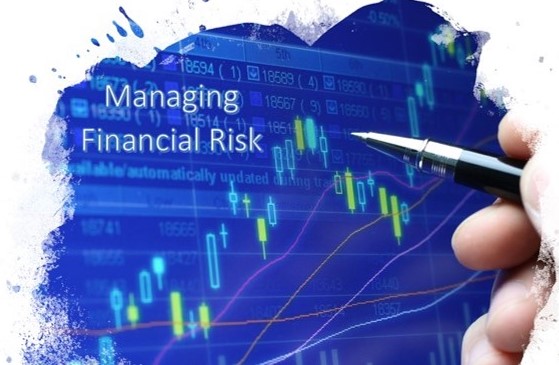My introduction to the dangers of financial risk arose in the early 1970s when I had occasion to travel to Germany and, in order to have money available, was advised by my bank to take traveller’s cheques. At the time, there was little choice of currency for these, and I was persuaded to take US dollar-denominated ones on the grounds that they were the most negotiable. When I got to Germany, I found that each time I cashed my cheques I received fewer and fewer Deutschmarks for my dollars. I was a victim of adverse movements in the exchange rate. I had, unknowingly at the time, been exposed to currency risk. In reality I had taken on considerably more risk than I need have, since not only was I exposed to movements in the Deutschmark against the US dollar, but I had also exposed myself to the exchange rate risk between British pounds (known as sterling) and the dollar, a fact I discovered on my return to the UK when I sought to cash in my surplus cheques!* My experience, as we will discuss below, mirrors that of the modern development of financial risk management, which has its origins in the global financial dislocations that followed the collapse of the post-war global structure called the Bretton Woods Agreement.
This module introduces the basic concepts of risk management and the justification for this process. Managing risk is part of any organisation’s strategic and operational activities, and analysing risks is an important aspect of a manager’s job. Risk management is the process of monitoring risks and taking steps to minimise their impact. Financial risk management is the task of monitoring financial risks and managing their impact. It is a sub-discipline of the wider function of risk management and an application of modern financial theory and practice. Financial risk management falls within the financial function of an organisation and is a reflection of the changing nature of this function over time.
Traditionally, the financial function has been seen in terms of financial reporting and control. The modern approach is to consider the financial function in terms of financial policy and financial decision making. This includes the management of the firm’s operational, business and economic risks. Risk is pervasive. In fact, we experience it in our everyday lives, as it is a constant of the human condition. Everything we do in our lives has a degree of risk attached to it. In living with risk, however, certain potentially high-risk exposures or potential events require us to take corrective action, for instance avoiding violent situations or insuring one’s life, home and other possessions. In the terminology of risk management, we would be adjusting the risk; that is, reducing the risk to acceptable proportions by hedging, offsetting or possibly eliminating it, depending on the courses of action that were available. The reason we make such adjustments is that the particular risks are too great for an individual to bear. We may transfer part or all of these risks to those better able to accept them, either by sharing the risk via insurance (as with home and life assurance policies) or, in some cases, by finding others who have the opposite risk and agreeing with them to exchange positions.
An example of risk management is the case of a commodity producer who is concerned about investing in production. To protect against adverse movements in the price of the commodity before it can be sold, the producer may seek out a buyer and agree to a fixed price before committing to produce. On the other side, the buyer has an equal incentive to agree to a fixed price, as he will be concerned that the price might increase in the future. In the parlance of financial markets, the buyer is locking in a fixed forward price for the commodity, in anticipation of its being needed in the future. Taking such a step will eliminate the risk to the producer that the price may decline, and to the consumer that the price may rise before the purchase.* Alternatively, we may change our behaviour to reduce the risk. For instance, one (but not the only) reason that companies establish overseas manufacturing subsidiaries in foreign markets is to eliminate currency risk on exports.
Because certain types of risk are unacceptable, a market for exchanging or offsetting risks has developed. This market in risk includes the insurance markets, capital markets and specialised financial instruments, such as a variety of derivatives. While it is possible to mitigate or transfer a great many types of risk in this way, the key to the risk management process is choosing those risks to accept, not seeking to avoid all risks. The latter is impossible.



Comments are closed